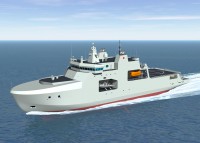Патрульные корабли арктической зоны типа Harry DeWolf
Основная информация
Главные размерения
Машина
- 4 * 3.6 MW (4,800 hp) diesel generators
- Diesel-electric
- 2 * shafts (2 * 4.5 MW (6,000 hp))
Персонал
Боевые силы и средства
- SATCOM (Link 16)
- Multichannel VHF/HF Radio
- Anti-missile detect systems
- OSI Maritme Systems
- Integrated Bridge Navigational System
- SAGEM Damage/Machinery Control Systems
- 1 * BAE Mk 38 25 mm
- 2 * M2 Browning machine gun
- Sikorsky CH-148 Cyclone, or Bell CH-146 Griffon (RCN)
- Onboard hangar
The Harry DeWolf-class offshore patrol vessels are warships of the Royal Canadian Navy (RCN) built by the Government of Canada Arctic and Offshore Patrol Ship (AOPS) procurement project, part of the National Shipbuilding Procurement Strategy (now called National Shipbuilding Strategy). In July 2007 the federal government announced plans for acquiring six to eight icebreaking warships for the RCN.
The lead ship of the class was announced as Harry DeWolf in September 2014, and four additional ships were named in January 2015. Construction of the ships Harry DeWolf and Margaret Brooke started in September 2015 and September 2016 at Halifax Shipyards, respectively. Harry DeWolf and Margaret Brooke are planned to be delivered in 2019 and 2020 respectively. Harry DeWolf was officially launched on 15 September 2018. Margaret Brooke was launched on 10 November 2019. Max Bernays began construction in December 2017 and William Hall was also planned to begin in 2017, although construction was delayed to early 2019, with Max Bernays expected to launch in 2021, followed by William Hall in 2022. Frédérick Rolette is scheduled to begin construction in 2019, with construction on Robert Hampton Gray expected to begin in 2021. They are planned to be completed by 2022 and 2023, respectively. Both Harry DeWolf and Margaret Brooke are planned to be retired from service and paid off by 2044.
The vessels' design was initially intended to incorporate a conventional icebreaking bow for cruising, and would have proceeded backwards for breaking heavy ice. The vessels' stern would have been designed for ice breaking and they would have employed azimuth thrusters for propulsion and for chewing through resistant ice. However, due to cost constraints, a conventional bow-first design was chosen for both light and heavy icebreaking. The propulsion would be provided by diesel-electric twin shafts with bolt-on propellers, similar to existing Canadian Coast Guard icebreakers. The vessels' ice class is Polar Class 5, but the bow region is further strengthened to higher Polar Class 4 level.
The vessels will have a hangar and flight deck capable of employing and maintaining the same maritime helicopters as the RCN's other vessels: the CH-148 Cyclone and the CH-149 Cormorant.
The ships are designed to displace 6,440 metric tons. They are capable of outfitting multiple payload options such as shipping containers, underwater survey equipment, or a landing craft. The vessels have a 20 tonne crane to self-load/unload, and a vehicle bay to carry vehicles for deployment over the ice. The design also calls for an enclosed cable deck and forecastle to better cope with the Arctic environment. On the open sea, the ship has fin stabilizers to reduce roll that are retractable during ice operations.
The vessels have a diesel-electric powertrain with four 3.6 megawatt (4,800 hp) diesel generators producing electricity for two 4.5 megawatt (6,000 hp) propulsion motors.
In August 2015, it was announced that BAE Systems had won the contract to provide up to six modified Mk 38 Mod 2 25 mm cannon for the naval ships in the class (coast guard order will be unarmed). This contract also covers the service life of the weapons.
In September 2015, it was announced that the ships would be outfitted with SAGEM BlueNaute navigational systems. On 7 October 2015, Thales IFF system was selected for use on the class. Terma currently provides its SCANTER 6002 radar system to Lockheed Martin Canada as part of the Combat Management System (CMS 330), which was selected by Irving Shipbuilding Inc. for the Arctic and Offshore Patrol Ships (AOPS).
On 22 May 2019 the official announcement was made to begin process of building two vessels for the Canadian Coast Guard. The Canadian Coast Guard version will be built to a slightly modified design. Modifications include a new bridge layout and accommodations for a non-military crew subject to Transport Canada requirements. Some areas are to be changed to meet the needs of coast guard equipment and there will be modifications to the deck.
Корабли8
- Комментарии
 ru
ru en
en uk
uk
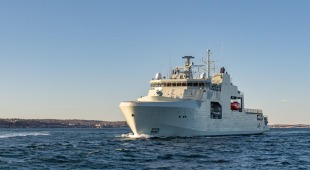



 Королевский канадский военно-морской флот
Королевский канадский военно-морской флот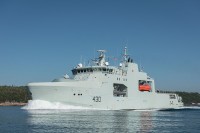
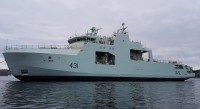
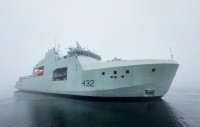
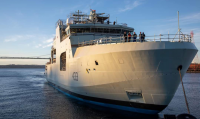
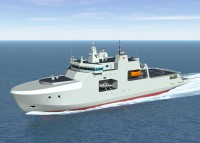
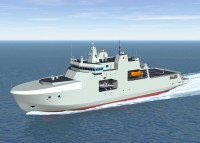
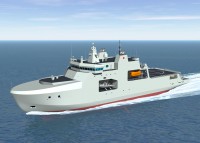
 Канадская береговая охрана
Канадская береговая охрана